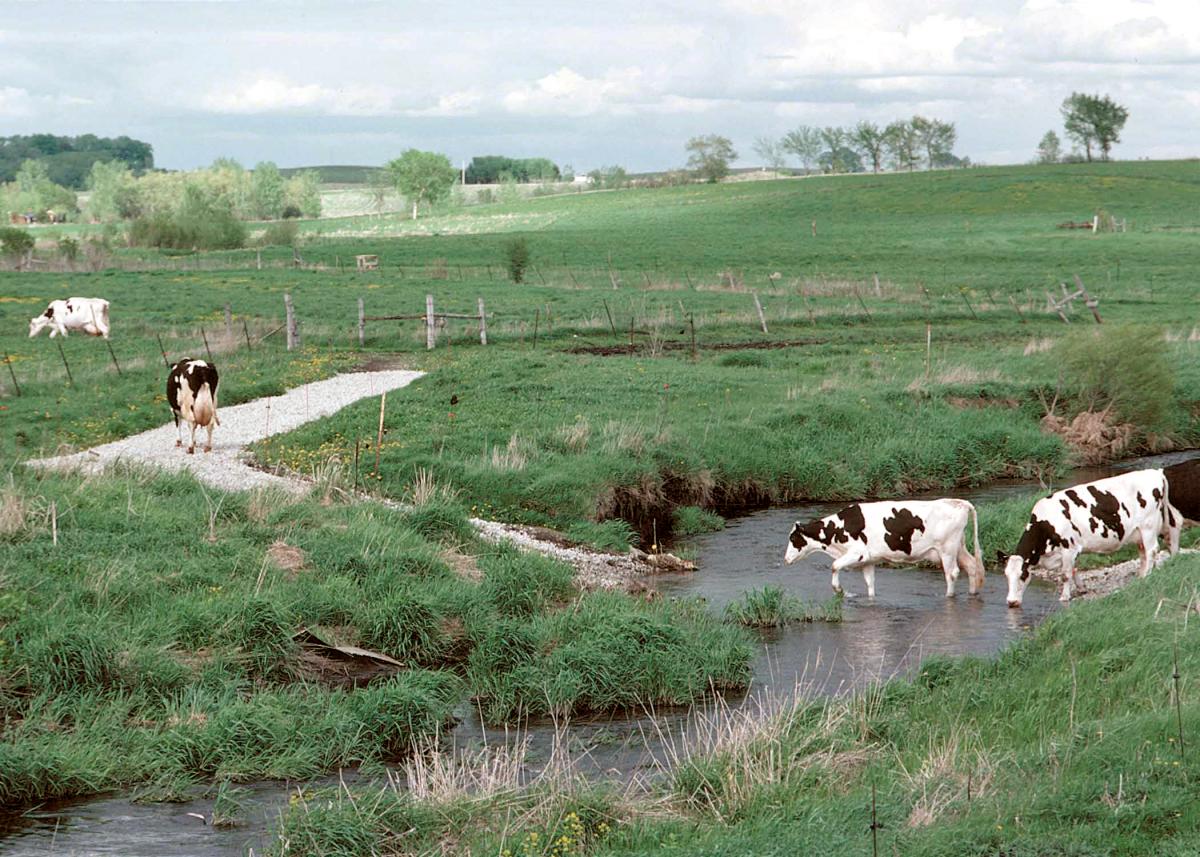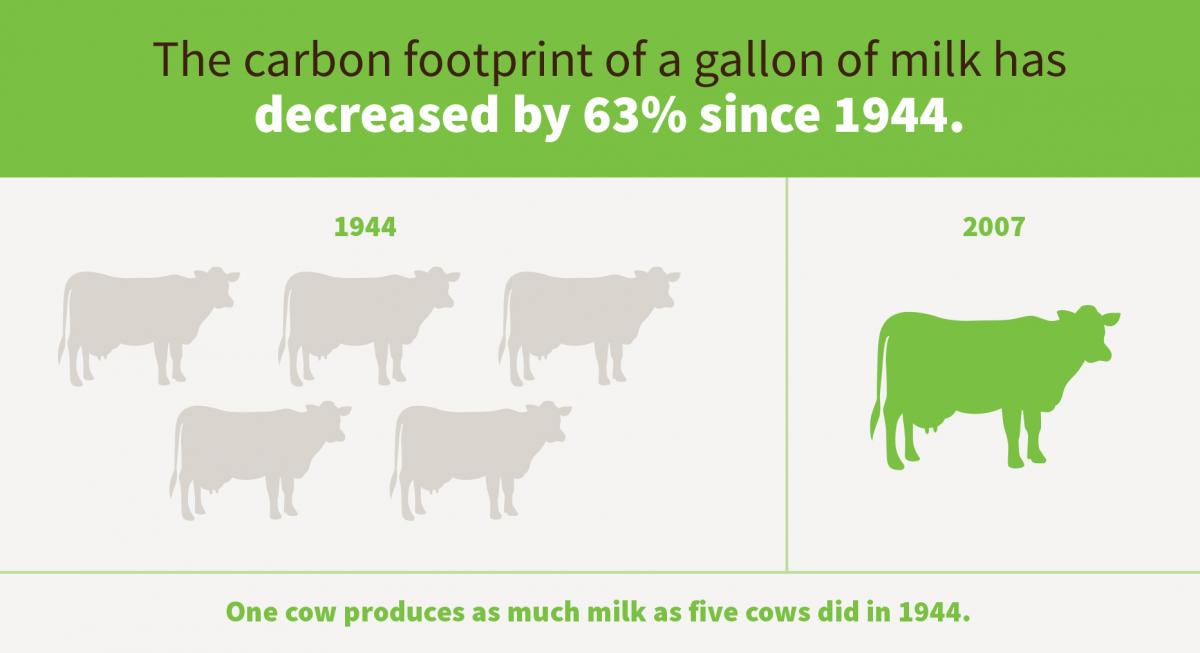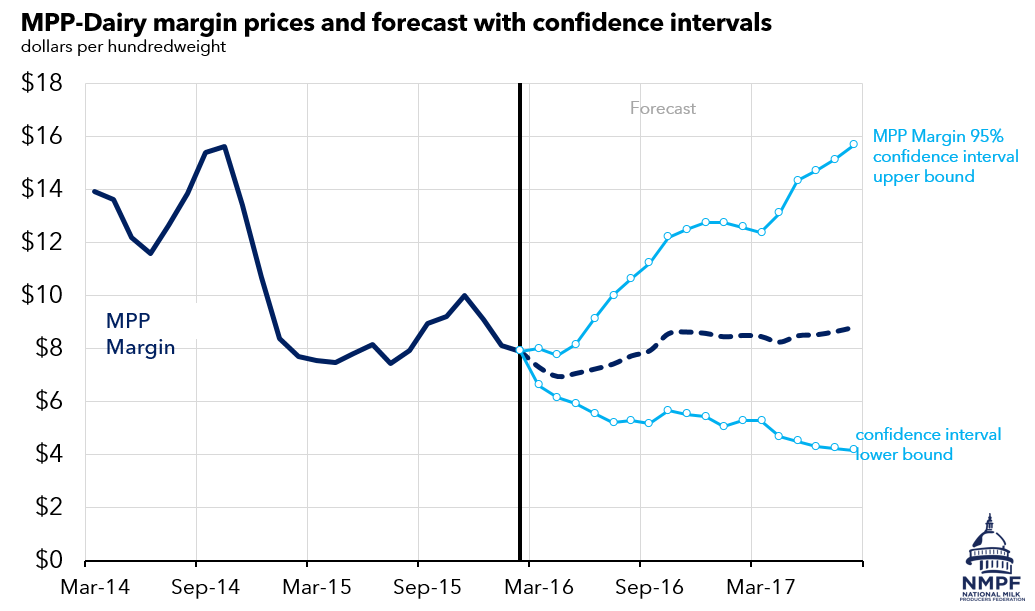Author: dcadmin
NMPF Commends Executive Order to Begin Rollback of Waters of the U.S. Rule
From Jim Mulhern, President and CEO, National Milk Producers Federation
ARLINGTON, VA – “President Donald Trump’s decision today to roll back the controversial Waters of the U.S. regulation is a welcome development for the nation’s dairy farmers, who have been concerned by the continuing lack of clarity and certainty generated by this policy. Today’s action signals that the Trump Administration recognizes we need to go back and rethink the entire process that led us to this point.
“The Waters of the U.S. rule was finalized by the Environmental Protection Agency (EPA) and the Army Corps of Engineers in 2015, but was subsequently blocked by a federal appeals court, which has suspended nationwide implementation of the regulation. Today’s decision directs EPA to revise or rescind the rule that expanded the number of waterways that are regulated under the Clean Water Act. Despite NMPF’s best efforts to influence EPA’s work on this measure several years ago, we were disappointed with many aspects of the final rule.
“NMPF and its members are committed to protecting U.S. waterways through voluntary efforts, as well as through regulatory compliance with the Clean Water Act. Clean water is central to healthy ecosystems, secure water supplies for human and animal consumption, and to the production of milk and other dairy products. The dairy industry will continue working with EPA and Army Corps of Engineers to find effective ways to achieve these important goals.”
###
The National Milk Producers Federation (NMPF), based in Arlington, VA, develops and carries out policies that advance the well-being of dairy producers and the cooperatives they own. The members of NMPF’s cooperatives produce the majority of the U.S. milk supply, making NMPF the voice of dairy producers on Capitol Hill and with government agencies. For more on NMPF’s activities, visit our website at www.nmpf.org.
Kansas Dairy Farmer Lynda Foster Tells Senate Action is Needed to Address Dairy Safety Net, Other Important Ag Issues
MANHATTAN, KS – Dairy farmers need Congress to make improvements in the dairy title of the farm bill this year, and not wait until 2018 when the current bill expires, according to testimony delivered here today by Kansas dairy farmer Lynda Foster.
In a field hearing Thursday on the campus of Kansas State University, Foster told members of the Senate Agriculture Committee that “dairy farmers deserve better” than the current Margin Protection Program (MPP), created in 2014 by Congress. “We need Congress to act swiftly this year and make the necessary changes in order for our industry to be able to protect ourselves from the bad year that could arrive at any time, even in years where experts are predicting higher margins.”
Foster is a third-generation dairy farmer and owner of Foster Dairy in Ft. Scott, Kansas. She testified on behalf of her cooperative, Dairy Farmers of America, as well as the National Milk Producers Federation, of which DFA is a member. Her full testimony can be found here.
The MPP, designed to assist farmers during periods of distressed milk prices or high feed costs, has failed to provide the level of protection envisioned in its original form. This has resulted in decreased participation in the program and dissatisfaction among dairy farmers across the country, Foster said.
“All we are seeking is a program that provides a safety net for dairy farmers when they need it most – something that delivers on the risk management promises dairy leaders and Congress committed to,” said Foster. “In order to do that, we must make adjustments to the program.”
In her remarks, Foster highlighted NMPF’s current effort to change the MPP. One of these changes includes restoring the formula for calculating feed costs to the one developed by National Milk in 2014. After NMPF worked to develop a model to reflect average feed costs for dairy cows, Congress subsequently cut that formula by 10 percent because of what turned out to be inaccurate projections by the Congressional Budget Office on program costs. This error resulted in a flawed calculation of dairy margins, and a much less useful program, Foster said.
Foster also discussed the critical need for proactive policies to help address farm labor demands. Citing a 2015 report prepared by NMPF and Texas A&M University, Foster said 51 percent of all dairy farm workers are foreign-born, and losing that labor would be devastating to the entire dairy industry, from farm to grocery store shelf. It’s why, Foster said, DFA and National Milk are urging Congress to address immigration reform “in a way that addresses agriculture’s needs for a legal and stable workforce.”
What has also changed considerably over the last decade is trade’s impact on dairy, said Foster. The industry went from $1 billion in exports in 2000 to $7.1 billion in 2014. Knowing the impact future trade policies could have on the health of the dairy industry, she said, it’s imperative that the United States protects the progress it has made when negotiating future agreements, or reassessing existing ones like the North American Free Trade Agreement (NAFTA).
Foster also thanked the committee for their work on child nutrition programs. Milk has been a key component in school meals for decades, Foster said, but consumption has decreased because children are limited in their drink options. Foster encouraged the Senate to pursue policies that would expand milk offerings in the school lunch program.
###
About NMPF
The National Milk Producers Federation, based in Arlington, VA, develops and carries out policies that advance the wellbeing of dairy producers and the cooperatives they own. The members of NMPF’s cooperatives produce the majority of the U.S. milk supply, making NMPF the voice of dairy producers on Capitol Hill and with government agencies. Visit www.nmpf.org for more information.
About DFA
Dairy Farmers of America (DFA) is a national dairy marketing cooperative that serves and is owned by more than 14,000 members on nearly 8,000 farms in 48 states. DFA also is one of the country’s most diversified manufacturers of dairy products, food components and ingredients, and is a leader in formulating and packaging shelf-stable dairy products. For more information, call 1-888-DFA-MILK (332-6455) or visit www.dfamilk.com.
New FARM Program Environmental Stewardship Module Helps Measure Improvements in Dairy Sustainability
ARLINGTON, VA – In its continued effort to share the compelling story of continuous improvement on America’s dairy farms, the National Dairy Farmers Assuring Responsible Management (FARM) Program has opened participation in its third component, FARM Environmental Stewardship (ES).
The Environmental Stewardship module joins the FARM Program’s two other pillars, FARM Animal Care and FARM Antibiotic Stewardship. The voluntary FARM Environmental Stewardship program helps dairy producers augment their environmental management efforts by identifying ways to improve their on-farm sustainability.
“America’s dairy farmers have long been active stewards of the environment,” said Jim Mulhern, President and CEO of NMPF. “Farmers should be proud that, today, producing a gallon of milk uses 65 percent less water, requires 90 percent less land and has a 63 percent smaller carbon footprint than it did 70 years ago. The FARM Environmental Stewardship program captures more detailed data on these great advances, while at the same time presenting farmers with useful information that can help them improve their farms efficiency and use fewer natural resources, all while saving money.”
FARM ES provides a comprehensive estimate of the greenhouse gas (GHG) emissions and energy use per pound of milk produced on dairy farms by asking producers a limited set of questions. The tool is based on a life-cycle assessment (LCA) of fluid milk conducted by the Applied Sustainability Center at the University of Arkansas, incorporating existing data from more than 500 dairy farms across the United States.
By tracking advances in dairy production efficiency, farmers can use FARM ES to assure dairy customers and consumers of their commitment to ongoing environmental progress. Producers can also use the results to identify opportunities for changes that could increase their farm’s sustainability and reduce their cost of production.
Dairy cooperatives and farmers wishing to use the ES module can opt in through the existing FARM Program database, which allows FARM evaluators to see the assessment in the existing web and mobile applications. FARM has created a random sampling protocol for the organizations that choose to use the ES module. This voluntary protocol allows FARM Program milk handlers to randomly select farms for an assessment, and provides instructions for how to document and promote the resulting improvements in their dairy supply chain.
The FARM Program has released several documents, videos and trainings to educate those interested in participating in the FARM Environmental Stewardship program. They can be found on the Environment page of the FARM website.
NMPF, along with dairy community partners Dairy Management, Inc. and the Innovation Center for U.S. Dairy, support the use of safe and efficient environmental practices to help dairy operations remain stewards of a healthy ecosystem.
###
The National Milk Producers Federation (NMPF), based in Arlington, VA, develops and carries out policies that advance the well-being of dairy producers and the cooperatives they own. The members of NMPF’s cooperatives produce the majority of the U.S. milk supply, making NMPF the voice of dairy producers on Capitol Hill and with government agencies. For more on NMPF’s activities, visit our website at www.nmpf.org.
Dairy, Ag Groups Urge President Trump to Raise New Canadian Milk Pricing Scheme Issue in Meeting with Prime Minister Trudeau
ARLINGTON, VA – The U.S. dairy sector is urging President Donald Trump to discuss Canada’s protectionist milk pricing policy during Monday’s meeting with Prime Minister Justin Trudeau.
The National Milk Producers Federation (NMPF), the U.S. Dairy Export Council (USDEC), the International Dairy Foods Association (IDFA) and the National Association of State Departments of Agriculture (NASDA) are calling the issue “one of the most sensitive and urgent topics complicating the relationship between the two countries.” The White House will host Trudeau in Washington today to discuss matters related to trade policy and the renegotiation of NAFTA, among other issues. According to the four groups, the two leaders need to devote time to addressing an imminent change in Canada’s milk pricing policy that would further antagonize industry relations between the United States and Canada.
The pricing scheme, already implemented in Ontario last year and slated to be used by Canada’s other provinces this year, is expressly intended to slash milk imports from the United States. The policy will also enable Canada to sell dairy ingredients below cost in international markets, in effect dumping the product at below cost in competition with U.S. dairy exports. The Ontario program has already cost U.S. companies $150 million in exports, thereby harming the American dairy farmers, dairy plant employees and rural communities that depend on the benefits of those foreign sales.
Implementation of this pricing measure “comes at a time when compliance with the letter and spirit of trade agreements is of paramount importance, both here in Washington and around the world,” said NMPF President and CEO Jim Mulhern. “Despite this, Canada still wants to move ahead with a policy that clearly violates its trade agreements with our country. We hope President Trump will remind Prime Minister Trudeau how important it is that Canada honor its commitments.”
The importance of U.S.-Canada trade issues was also raised last week in a meeting between House Speaker Paul Ryan and Canadian Foreign Minister Chrystia Freeland. Ryan said after their meeting Tuesday that dairy market access is a key issue the two nations must improve upon.
Tom Vilsack, president and CEO of USDEC, said “American dairy producers and processors want a fair and level trade relationship, and have deep concerns about proposed changes to the Canadian supply-side management system, which are designed, in part, to discourage U.S. exports.”
Michael Dykes, D.V.M., president and CEO of IDFA noted: “Canada’s intentional and continued flouting of its trade obligations effectively blocks imports of U.S. ultra-filtered milk. What’s more, existing Canadian tariffs that range from 200 percent to more than 300 percent on other U.S. dairy products are unacceptable. Exports are vitally important to the health of the U.S. economy, especially in the rural heartland of our country, and we urge President Trump to stress the importance of market access for U.S. dairy products during his meeting with Prime Minister Trudeau.”
The organizations believe that this meeting between President Trump and Prime Minister Trudeau offers an ideal opportunity for the dairy pricing policy to be on the table during their discussion.
“The states are deeply troubled by recent actions taken in Canada, at the provincial and national level, which raise serious concerns about Canada’s compliance with international trade obligations,” said NASDA CEO Dr. Barbara P. Glenn. “We encourage President Trump to make this a top priority for his administration and we urge Prime Minister Trudeau to ensure Canada meets its obligations.”
Holding Canada to its dairy trade agreements has remained a strong focus for NMPF, USDEC and IDFA over the last year. Last week, a group of 17 dairy companies representing dairy farmers and processors from all over the United States asked governors in 25 states to urge Canadian policymakers to halt the national implementation of the milk pricing system. NMPF, USDEC, IDFA and NASDA also raised the matter with Trump last month before he assumed office.
###
About NMPF
The National Milk Producers Federation, based in Arlington, VA, develops and carries out policies that advance the wellbeing of dairy producers and the cooperatives they own. The members of NMPF’s cooperatives produce the majority of the U.S. milk supply, making NMPF the voice of dairy producers on Capitol Hill and with government agencies. Visit www.nmpf.org for more information.
About IDFA
The International Dairy Foods Association (IDFA), Washington, D.C., represents the nation’s dairy manufacturing and marketing industries and their suppliers, with a membership of 550 companies within a $125-billion a year industry. IDFA is composed of three constituent organizations: the Milk Industry Foundation (MIF), the National Cheese Institute (NCI) and the International Ice Cream Association (IICA). IDFA’s nearly 200 dairy processing members run nearly 600 plant operations, and range from large multi-national organizations to single-plant companies. Together they represent more than 85 percent of the milk, cultured products, cheese, ice cream and frozen desserts produced and marketed in the United States. IDFA can be found online at www.idfa.org.
About USDEC
The U.S. Dairy Export Council (USDEC) is a non-profit, independent membership organization that represents the global trade interests of U.S. dairy producers, proprietary processors and cooperatives, ingredient suppliers and export traders. Its mission is to enhance U.S. global competitiveness and assist the U.S. industry to increase its global dairy ingredient sales and exports of U.S. dairy products. USDEC accomplishes this through programs in market development that build global demand for U.S. dairy products, resolve market access barriers and advance industry trade policy goals. USDEC is supported by staff across the United States and overseas in Mexico, South America, Asia, Middle East and Europe.
About NASDA
The National Association of State Departments of Agriculture (NASDA) represents the elected and appointed commissioners, secretaries, and directors of the departments of agriculture in all fifty states and four U.S. territories. NASDA grows and enhances agriculture by forging partnerships and creating consensus to achieve sound policy outcomes between state departments of agriculture, the federal government, and stakeholders. To learn more about NASDA please visit www.nasda.org.
NMPF Endorses House Bill Clarifying Regulation of Nutrient Management Practices
NMPF is supporting new bipartisan legislation introduced in the House of Representatives that would exempt dairy farms and other livestock producers from being subject to the Resource Conversation and Recovery Act (RCRA), which governs the safe disposal of solid waste.
The RCRA measure was enacted more than 40 years ago to regulate solid wastes in landfills, but more recently, the regulation has been used inappropriately to target agricultural sources of farm nutrients, particularly dairy farms in the Northwest – even when producers have demonstrated they are following approved plans for the proper use of manure.
Last week, Rep. Dan Newhouse (R-WA) introduced the Farm Regulatory Certainty Act (H.R. 848), which clarifies the that RCRA law was never intended to regulate agricultural operations such as dairy farms. It would also protect farmers from citizen suits if they are undergoing efforts to comply with federal requirements. Newhouse was joined by 29 other House members in co-sponsoring the bill, and NMPF is working with him to develop broader support for the measure in Congress. An identical measure is expected to be introduced in the Senate in the next few weeks.
"Dairy farmers need certainty regarding the application of environmental policies and regulations to their operations," said Jim Mulhern, president and CEO of NMPF. "RCRA was not intended to govern farms, and we are working with Congress on advancing this legislation to make that point crystal clear to state and federal regulators."
Mulhern noted that NMPF supports the use of safe and efficient environmental practices – such as anaerobic digesters and nutrient recovery – to help dairy operations remain stewards of a healthy ecosystem.
High Court Places WOTUS Lawsuit on Hold Pending Jurisdictional Question
 The controversial Waters of the U.S. (WOTUS) rule will remain in legal limbo for the foreseeable future, as the U.S. Supreme Court determines which court has jurisdiction over the matter. On Jan. 13, the high court agreed to resolve a dispute over which federal court should hear challenges to the Environmental Protection Agency’s 2015 WOTUS rule, the implementation of which currently has been suspended by the U.S. Court of Appeals for the 6th Circuit.
The controversial Waters of the U.S. (WOTUS) rule will remain in legal limbo for the foreseeable future, as the U.S. Supreme Court determines which court has jurisdiction over the matter. On Jan. 13, the high court agreed to resolve a dispute over which federal court should hear challenges to the Environmental Protection Agency’s 2015 WOTUS rule, the implementation of which currently has been suspended by the U.S. Court of Appeals for the 6th Circuit.
This decision will not result in a hearing by the Supreme Court on the merits of the WOTUS rule itself, but merely on whether legal challenges to the rule should be heard in an appeals court or a district court.
The WOTUS rule went into effect on Aug. 28, 2015, despite widespread concern from National Milk and other agricultural groups. NMPF told the EPA that the final rule sufficiently addresses the specific concerns raised in the organization’s comments on the proposed rule.
The purpose of the WOTUS regulation, proposed in April 2014 by the U.S. Environmental Protection Agency (EPA) and the U.S. Army Corps of Engineers, is to clarify the agencies’ authority over certain waters. That jurisdiction originally included “navigable” waters, though it has since expanded to include upstream waters and streams such as the kind farmers use for drainage and irrigation. On October 9, 2015, the Sixth Circuit court ordered a nationwide stay of implementation of the final rule.
At this point, National Milk believes the WOTUS regulation will be revoked by the new leadership at the EPA, or nullified by the courts or Congress. This will then create an opportunity for farm groups to start work again with federal regulators on a more legally-appropriate and workable water quality policy.
FARM Environmental Stewardship Releases New Materials in Preparation for Launch
 The Farmers Assuring Responsible Management (FARM) Environmental Stewardship Program is releasing educational materials for those interested in utilizing the new FARM Environmental Stewardship (ES) module, launching Feb. 13. FARM Environmental Stewardship is a voluntary tool that provides a comprehensive estimate of the greenhouse gas (GHG) emissions and energy use associated with dairy farming.
The Farmers Assuring Responsible Management (FARM) Environmental Stewardship Program is releasing educational materials for those interested in utilizing the new FARM Environmental Stewardship (ES) module, launching Feb. 13. FARM Environmental Stewardship is a voluntary tool that provides a comprehensive estimate of the greenhouse gas (GHG) emissions and energy use associated with dairy farming.
The tool is based on a life-cycle assessment (LCA) of fluid milk conducted by the Applied Sustainability Center at the University of Arkansas, incorporating data from more than 500 dairy farms across the United States. The FARM ES module asks a limited set of questions to assess a farm’s carbon and energy footprint – reducing the burden on farmers while still providing reliable, statistically robust estimates.
U.S. dairy farmers have a long-standing history of environmental stewardship. As dairy production has become more efficient, it requires fewer resources to produce the same amount of milk. Compared to 70 years ago, producing a gallon of milk uses 65 percent less water, requires 90 percent less land and has a 63 percent smaller carbon footprint. According to a study by the United Nations Food and Agriculture Organization, dairy farming in North America has the lowest greenhouse gas emissions intensity of any region in the world.
The FARM Environmental Stewardship (ES) module helps dairy companies capture and explain those improvements, and helps dairy farmers identify opportunities for continued improvements that benefit their farm’s bottom line. Cooperatives wishing to participate in the program can opt-in through the existing FARM database, which will allow FARM evaluators to see the assessment in the existing web and mobile data entry applications. FARM will also launch a random sampling protocol for those cooperatives wishing to participate in the program without having to do an assessment on each farm, while still receiving a statistically robust randomized result for their milk supply chain.
Links to the FARM Environmental Stewardship User Guide, Assessment, and Getting Ready document are included below and on the FARM ES website.
Environmental Stewardship Assessment
Paper copy of full FARM ES assessment
Environmental Stewardship User Guide
28 page in-depth explanation of inputs and outputs of a FARM ES assessment. Please visit the FARM Store to order a hard copy
This documents tells farmers and field staff what materials are needed before completing a FARM ES assessment
UPCOMING DATES
FARM ES Database Introduction | February 7 | 3:00 PM EST
Christopher Kocmoud, Senior System Engineer with Texas Center for Applied Technology at Texas A&M University will walk through how to utilize the Environmental Stewardship module within the FARM Database and data entry applications.
FARM ES Launch | February 13 | 9:00 AM EST
FARM ES Sampling Protocol | February 14 | 12:00 PM EST
Dr. Mark Kinsel will explain the protocol using Microsoft Excel. The primary audience are those with the FARM "Co-op Manager" account but other FARM Program participants are welcome to attend.
FARM ES Project Guide| April 22
FARM ES will launch the Project Guide on Earth Day 2017. The publication will spotlight farming practices that lower a farms footprint in FARM Environmental Stewardship with an eye towards simultaneously improving an operations bottom line.
CWT Assists in Capturing 5.7 Million Pounds of Dairy Export Sales Contracts
 Cooperatives Working Together members won 39 contracts to sell 4.42 million pounds of cheese and 1.32 million pounds of butter to customers in Asia, Central America, the Middle East, North Africa and Oceania in January 2017. The product will be shipped from January through April 2017.
Cooperatives Working Together members won 39 contracts to sell 4.42 million pounds of cheese and 1.32 million pounds of butter to customers in Asia, Central America, the Middle East, North Africa and Oceania in January 2017. The product will be shipped from January through April 2017.
These CWT-assisted transactions will move the equivalent of 70.57 million pounds of milk on a milkfat basis to customers in 10 countries on five continents. The amounts of dairy products and related milk volumes reflect current contracts for delivery, not completed export volumes. CWT will pay export assistance to the bidders only when export and delivery of the product is verified by the submission of the required documentation.
Assisting CWT member cooperatives gain and maintain world market share through the Export Assistance program in the long-term expands the demand for U.S. dairy products and the U.S. farm milk that produces them. This, in turn, positively impacts all U.S. dairy farmers by strengthening and maintaining the value of dairy products that directly impact their milk price.
All cooperatives and dairy farmers are encouraged to add their support to this important program. Membership forms are available on the CWT website.
NMPF Opposes Proposal to Reduce Dairy Offerings in WIC Program
 NMPF pushed back against a proposal last month from the National Academies of Science (NAS) to reduce the amount of dairy foods offered through the federal assistance WIC program. In criticizing the recommendation, NMPF noted that dairy – an irreplaceable source of nutrition for Americans – is already widely under-consumed among WIC recipients.
NMPF pushed back against a proposal last month from the National Academies of Science (NAS) to reduce the amount of dairy foods offered through the federal assistance WIC program. In criticizing the recommendation, NMPF noted that dairy – an irreplaceable source of nutrition for Americans – is already widely under-consumed among WIC recipients.
Congress requested that the NAS review the WIC food offerings to provide support for aligning the WIC basket with those foods recommended by the Dietary Guidelines for Americans. NMPF noted that milk, cheese and yogurt are “the No. 1 source of nine essential nutrients in children’s diets: protein, calcium, phosphorus, magnesium, potassium, vitamins A, B12, D and riboflavin.
The reason dairy foods are included in the WIC package is that no other food source can deliver such a wide range of vital nutrients to mothers and young children. Cutting back on dairy is a step in the wrong direction,” said Jim Mulhern, President and CEO of NMPF, who noted that milk has always been central to the WIC program’s goal of providing low-income participants with foods and nutrients they typically under-consume.
The NAS report did contain some pro-dairy provisions, such as that yogurt should be easier for women obtain through the WIC program. The NAS recommendations will now be reviewed by USDA. NMPF will work with the International Dairy Foods Association to highlight the value to all Americans of dairy foods.
MPP Margin Formula Tops $10 in Nov.-Dec. Period

USDA’s National Agricultural Statistics Service (NASS) last week reported that the December U.S. average all-milk price was $18.80 per hundredweight, up $1.20 from November. The price increase was greater than indicated by the December federal order class prices announced in early January. NASS also said that the December monthly feed cost, under the current Margin Protection Program (MPP) farm bill formula, is $7.70 per hundredweight., up 8 cents from November. The monthly MPP margin for December is $11.10 per hundredweight., $1.12 higher than November’s monthly margin. The bimonthly MPP margin for November-December is $10.54 per cwt., a rise of $1.38 per hundredweight from the previous margin for the September-October period.
USDA’s current MPP margin forecast (below), based on Jan. 30 CME futures settlements, projects the margin will remain between $10-$11 per hundredweight during all of 2017, with only a slight chance of falling below $8 per hundredweight during any period. USDA’s MPP margin forecasts are updated daily online.
NMPF’s Future for Dairy website offers a variety of educational resources to help farmers monitor the program.
NMPF Seeks Expanded Tariffs on European Dairy Products as Part of Beef Settlement
Following the European Union’s (EU) long-standing refusal to resolve a World Trade Organization dispute impeding U.S. exports of beef to the EU, NMPF urged the U.S. Trade Representative last month to add European dairy foods to the list of items that will be subject to retaliatory tariffs.
At issue is how the United States should turn up the heat on Europe for failing to comply with its trade obligations to allow the importation of American beef. Since dairy is a major agricultural sector important to many EU member states, NMPF told the USTR last month that imposing additional retaliatory tariffs on EU cheese exports will reinforce the goal of getting the EU to comply with its commitments.
Roquefort cheese is one of the products that the USTR proposed as a target to help promote EU compliance. However, NMPF noted that the current retaliatory tariffs list is outdated, having been drawn up many years ago, and would benefit from the addition of more dairy products. NMPF recommended several cheese tariff lines that would help spur internal pressure by EU stakeholders to resolve this long-standing WTO case.
Since 1998, when the WTO determined that the EU was not complying with its WTO obligations due to unscientific bans affecting U.S. beef exports, the United States has had the WTO-sanctioned right to impose tariffs on a range of EU products amounting to $116.8 million a year. For the past several years, the United States has sought to work under a Memorandum of Understanding (MOU) with the EU to provide compensatory market access for certain types of U.S. beef exports. However, the EU’s approach to administering this MOU has not had the desired effect.
As a result, the USTR announced in late 2016 that it is reinstituting the retaliatory tariffs. NMPF wants to ensure that the EU’s reliance on exports to the United States is used strategically to have a positive impact on the EU’s compliance with its trade commitments.





